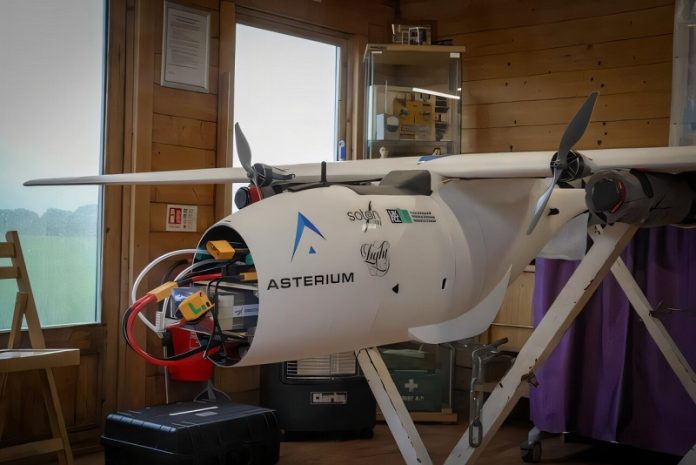
Scientists at the University of Southampton are testing an innovative new “nervous system” for drones, which could help them fly for longer periods and reduce the need for frequent landings.
This special system, developed by a team led by Dr. Chris Holmes, uses optical fibers that act like nerves in the human body, continuously monitoring the drone’s structural health.
This monitoring allows the drone to fly safely without needing as many inspections on the ground, potentially saving time and cutting operating costs.
Currently, drones that carry cargo must make regular stops for safety checks, which interrupts their missions and increases expenses.
But with the Southampton team’s optical fiber system, drones can keep an eye on their own “health” while in flight.
The system provides real-time updates through light signals, unlike traditional electronic systems that can sometimes face radio interference issues.
According to Dr. Holmes, “This is a kind of nervous system for drones,” and by using light, it makes the monitoring process much smoother and more reliable.
Another scientist on the team, Dr. Martynas Beresna, explained that this system reduces the workload for ground crews and boosts drone safety.
The team developed a unique technique called “optical speckle” that creates specific light patterns depending on the stresses and strains felt by the drone’s “nervous system.”
These patterns are interpreted by artificial intelligence (AI) to assess the drone’s condition, allowing ground teams to spot issues early without requiring the drone to land.
The project was initially tested on a drone created by Southampton University students, including aerospace engineering graduate Toby King-Cline. Originally designed to carry life-saving equipment like defibrillators, this student-built drone served as an ideal platform for testing the optical fiber system.
“The live data showed us that the technology could keep drones flying longer without needing large ground support teams,” King-Cline said.
With this new technology, drones could become more efficient and cost-effective, paving the way for broader commercial use.
The industry’s value is expected to reach £45 billion by 2030, and this advancement could play a key role in making drones a common sight across various sectors.
The Southampton team hopes to have the system commercially available by 2025, making future drones more reliable and potentially changing how they are used in many industries.



